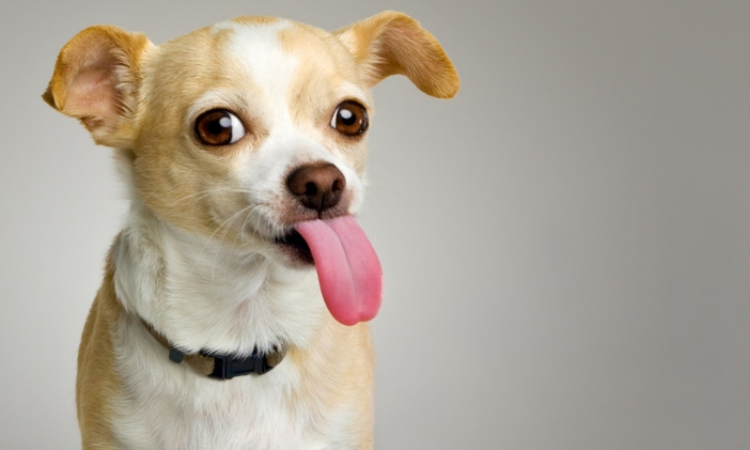Stabyhouns are beautiful, intelligent, and loyal dogs originating from the Netherlands. They have a long history of being versatile working dogs, excelling in activities such as hunting, tracking, and even herding. Today, Stabyhouns are primarily kept as companion animals due to their friendly nature and adaptability. However, when it comes to leaving them alone, certain considerations need to be taken into account. In this article, we will delve into “Can Stabyhouns Be Left Alone for Long Periods?”. Let’s dive in!
Can Stabyhouns Be Left Alone for Long Periods?
Understanding the Stabyhoun Breed
Before diving into the topic of leaving Stabyhouns alone, it’s crucial to understand their breed characteristics. Stabyhouns are known for their strong attachment to their human families. They thrive on human companionship and are happiest when they can spend quality time with their loved ones. This close bond often translates into separation anxiety when they are left alone.
Stabyhouns and Separation Anxiety
Separation anxiety is a common issue among dogs, and Stabyhouns are no exception. It’s a condition where dogs become distressed and anxious when separated from their owners. This can lead to various behavioral problems and even physical health issues if not addressed appropriately. Understanding the signs and causes of separation anxiety in Stabyhouns is essential for their well-being.
Common Traits of Separation Anxiety
Some common signs of separation anxiety in Stabyhouns include:
- Excessive barking, whining, or howling when left alone
- Destructive behavior, such as chewing furniture or scratching doors
- Pacing, restlessness, or attempting to escape
- Urinating or defecating indoors despite being house-trained
- Loss of appetite or changes in eating habits
How Stabyhouns May Experience Separation Anxiety
Stabyhouns are highly social animals and form deep emotional connections with their families. When they are left alone for long periods, they can feel abandoned, leading to distress and anxiety. Stabyhouns are intelligent and sensitive, which makes them more prone to separation anxiety.
Leaving Stabyhouns Alone: The Ideal Duration
Now that we understand the potential for separation anxiety in Stabyhouns, the next question arises: How long can you leave them alone? The answer varies depending on factors such as the individual dog’s temperament, age, and overall health. However, as a general guideline, it’s recommended not to leave Stabyhouns alone for more than 4-6 hours at a time.
Preparing Your Stabyhoun for Alone Time
To help your Stabyhoun cope with being left alone, there are several steps you can take to ensure their comfort and well-being.
Gradual Training and Desensitization
Start by gradually training your Stabyhoun to tolerate alone time. Begin with short absences and gradually increase the duration over time. This helps them become accustomed to being alone and reduces the chances of separation anxiety.
Creating a Safe and Comfortable Environment
Ensure that your Stabyhoun has a designated space where they feel secure and comfortable. Provide them with a cozy bed, toys, and interactive puzzles to keep them occupied during your absence. Additionally, consider leaving a piece of clothing with your scent, as it can offer comfort and reassurance.
Signs of Distress in Stabyhouns
Even with the best preparations, some Stabyhouns may still experience distress when left alone. It’s crucial to recognize the signs and take appropriate action to alleviate their anxiety.
Behaviors Indicating Separation Anxiety
If your Stabyhoun displays any of the following behaviors when left alone, it may be an indication of separation anxiety:
- Excessive drooling or panting
- Escaping or attempting to escape confinement
- Self-harm, such as excessive scratching or biting
- Loss of bladder or bowel control
- Refusing to eat or drink
Health Issues to Be Aware Of
In some cases, Stabyhouns may exhibit physical symptoms due to the stress of separation anxiety. These can include digestive issues, weight loss, and skin problems. If you notice any concerning health changes, it’s important to consult with a veterinarian.
Tips for Leaving Stabyhouns Alone
While Stabyhouns prefer human companionship, there are several strategies you can employ to make their alone time more enjoyable and less stressful.
Engaging Toys and Activities
Provide your Stabyhoun with interactive toys, treat puzzles, or food-dispensing toys to keep them mentally stimulated and entertained while you’re away. These can help distract them from any anxiety they may experience.
Doggy Daycares and Pet Sitters
Consider enrolling your Stabyhoun in a reputable doggy daycare or hiring a pet sitter. This way, they can have social interactions and supervision during your absence, minimizing their feelings of loneliness.
Using Technology to Stay Connected
Thanks to modern technology, you can stay connected with your Stabyhoun even when you’re not physically present. Set up a pet camera or use video calling applications to check on your furry friend and provide them with verbal reassurance.
The Importance of Exercise and Mental Stimulation
To maintain a healthy and balanced lifestyle, Stabyhouns require regular exercise and mental stimulation.
Exercise Routines for Stabyhouns
Engage in daily exercise sessions with your Stabyhoun to fulfill their physical needs. This can include walks, jogging, or playing fetch. A tired dog is often a content dog, which can reduce the chances of separation anxiety.
Mental Enrichment Activities
Stabyhouns are intelligent and thrive on mental stimulation. Incorporate activities such as puzzle toys, obedience training, or scent work to keep their minds engaged and occupied.
Professional Assistance for Severe Cases
In severe cases of separation anxiety, it’s crucial to seek professional help from a qualified dog trainer or animal behaviorist. They can provide personalized strategies and guidance to address your Stabyhoun’s specific needs and help them overcome their anxiety.
Conclusion
While Stabyhouns may experience separation anxiety, with proper preparation, training, and attention to their needs, they can learn to tolerate and even enjoy alone time. Remember to gradually introduce alone time, provide a stimulating environment, and seek professional help when needed. By understanding and addressing their emotions, you can ensure that your Stabyhoun remains happy, healthy, and well-adjusted.
FAQs
Can Stabyhouns be left alone overnight?
Leaving a Stabyhoun alone overnight is generally not recommended, as they are social animals and thrive on human companionship. Extended periods of solitude can lead to separation anxiety and distress.
How do I know if my Stabyhoun has separation anxiety?
Signs of separation anxiety in Stabyhouns include excessive barking, destructive behavior, pacing, and elimination indoors despite being house-trained. Consult with a veterinarian or animal behaviorist if you suspect your Stabyhoun may be experiencing separation anxiety.
Is crate training recommended for Stabyhouns?
Crate training can be beneficial for some Stabyhouns, as it provides a safe and secure den-like environment. However, it should be introduced gradually and with positive reinforcement. Consult with a professional trainer to determine if crate training is suitable for your Stabyhoun.
Can Stabyhouns stay alone if they have a companion?
Having a companion, such as another dog, can alleviate some of the separation anxiety in Stabyhouns. However, it’s important to note that each dog is unique, and their individual needs may vary. Introduce new companions carefully and monitor their interactions to ensure a positive relationship.
Are Stabyhouns more prone to separation anxiety than other breeds?
While Stabyhouns are known for their strong attachment to their families, separation anxiety can affect dogs of any breed. Some individual Stabyhouns may be more prone to separation anxiety, but proper training, socialization, and meeting their needs can help mitigate this issue.





